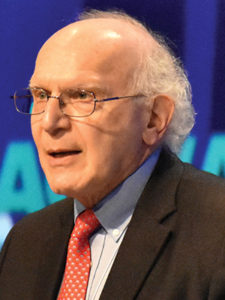
Rheumatologists know hydroxychloroquine (HCQ) as the single most useful agent for lupus, and ophthalmologists know HCQ as a preventable cause of retinopathy that can result in blindness. And it was ophthalmologists, not rheumatologists, who published the latest guidelines limiting HCQ to no more than 5mg/kg a day.
“HCQ does not just prevent flares in lupus. It is useful in many other rheumatologic indications and protects against diabetes, thrombotic events, dyslipidemia, and more,” said Nathalie Costedoat-Chalumeau, MD. “HCQ improves survival in our patients.”
Dr. Costedoat-Chalumeau, with the Referral Center for Rare Auto-Immune and Systemic Diseases at Chochin Hospital, Paris, France, introduced The Great Debate: Guidelines for SLE: HCQ Dose Should Be No More Than 5mg/kg in All Patients on Sunday. The question of whether HCQ dosing should be no more than 5mg/kg a day in all lupus patients evokes strong feelings across diseases and specialties.
The American Academy of Ophthalmology (AAO) based its 2016 recommendations on a retrospective study of 3,482 Kaiser Permanente patients in Northern California taking HCQ for at least five years. The AAO concluded that the safe daily dose of HCQ is no more than 5mg/kg a day as dispensed by pharmacy. All patients should be screened for retinopathy at baseline, at five years, and annually thereafter.
The AAO recommendations make no reference to drug levels in patients’ blood, Dr. Costedoat-Chalumeau noted. Blood level studies have found that nearly a third of patients are severely nonadherent. An analysis of pharmacy refill data among 10,405 Medicare patients initiating HCQ found that 85 percent were nonadherent.

Adherence is clearly an issue, said James T. Rosenbaum, MD, Chair of Arthritis and Rheumatic Diseases at the Oregon Health & Science University and Chief of Ophthalmology at the Legacy Deveres Eye Institute in Portland. Screening for retinopathy is also an issue.
“Bullseye retinopathy should never happen with HCQ,” said Dr. Rosenbaum, supporting the AAO recommendations. “HCQ is a safe drug as long as you screen appropriately. And with OCT, optical coherence tomography, plus a visual field exam, we have a quick, noninvasive, relatively inexpensive means to examine the retina to catch any toxicity before the patient sees any visual effect.”
The guideline is based on actual weight at the time of prescribing, which can maximize dosing and therapeutic effect.
“We need more data,” Dr. Rosenbaum said. “We don’t know the lowest effective dose of HCQ, and we don’t know if loading doses are safe. We don’t know if higher doses are safe in patients with higher body weight. And we don’t know how to identify patients at greatest risk using blood levels, genetic factors, or other elements. What we do know is that anti-malarials have a very low rate of toxicity if appropriate guidelines are followed.”
Anti-malarials do have a very low rate of toxicity, agreed Michelle Petri, MD, MPH, Professor of Medicine at The Johns Hopkins University. The real concern is patients who are taking too little HCQ, not rheumatologists who are prescribing too much.
“If ophthalmologists are telling patients they might go blind from HCQ, that is going to worsen adherence,” Dr. Petri said, arguing against the AAO dosing recommendation. “We know that more than half our patients are nonadherent. And among adolescents and young adults with lupus, nearly 30 percent had no detectable HCQ blood level.”
The AAO also misread the data behind the guidelines, she said. The 5mg/kg dose does not lessen the incidence of retinal toxicity; it simply delayed toxicity by five years. And the results disagree with a prospective study conducted at Hopkins.
Where the retrospective Kaiser study found a 40 percent rate of retinal toxicity at 20 years, the Hopkins lupus cohort showed an 11 percent rate at 16-20 years and nine percent at 21 years or longer. The new guidelines might allow for longer-term use of HCQ for most patients, but what about short-term lupus control in individual patients?
“This whole argument has been clouded by fear of blindness,” Dr. Petri said. “We should not make our patients afraid of our most important drug for lupus.”
